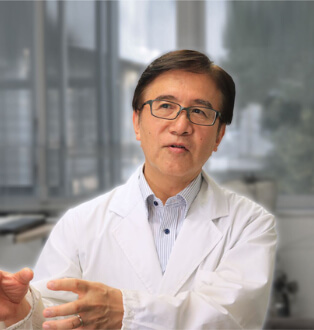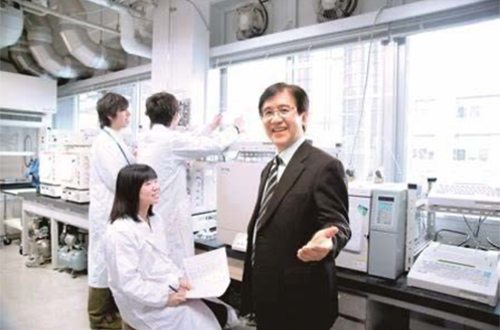Dr.OHNO's research technology

Kyushu Institute of Technology
Professor OHNO
TERUHISA OHNO
Development and supervision
At present, Dr.OHNO has obtained 44 patents, published 47 books, 192 academic papers, and the articles have been cited 10342 times. Follow-up reports from NHK, Asahi Shimbun, West Japan Shimbun, etc. are following up. He is the first person to develop indoor visible light photocatalysts, and he is also the world's leading high-performance photocatalyst (even in indoor light can also play a role) researcher.
·Scientific and effective public health
·Promote space hygiene
Patent Links
The photocatalyst (titanium oxide) is a material. It can generate electrons and holes in particles through ultraviolet radiation, and generate strong oxidizing power through the holes generated on the surface to decompose organic compounds, bacteria, viruses and other harmful substances in contact with it. Due to its anti-fouling, sterilization, air purification and harmlessness of harmful chemicals, it has a variety of application potentials. These characteristics can be applied to the production of various daily necessities such as building exterior walls, glass, mirrors, and fibers. In addition, research on the application of environmental purification and the synthesis of chemical products is also actively being promoted.
Researchers at home and abroad are actively promoting the development and research of photocatalysts. However, since the presence of ultraviolet light is necessary, it is no exaggeration to say that most of them are just atomization technologies developed to improve the adsorption characteristics of target substances in the air. This means that there is no essential research and development to improve the catalytic activity of the photocatalyst itself (from the separation of electrons and holes to the separation of charges).
The photocatalyst research conducted in the OHNO Laboratory of Kyushu Institute of Technology is extremely original. In the research, they controlled the separation of the oxidation reaction and the reduction reaction field by controlling the shape of the photocatalyst particles (successfully separating electrons and holes→charge separation), thereby greatly improving the performance of the photocatalyst. In addition, in the photocatalytic reaction, ultraviolet light is considered to be an indispensable photocatalyst. With the help of special technology, researchers fixed metal ions on its surface, achieving the first successful expansion to indoor light (visible light) areas in the world. At the same time, through cooperative development with cooperative companies, we have also successfully developed an indoor light-responsive photocatalytic coating with anti-virus, anti-bacterial, anti-fungal and other functions, which is optimized for the indoor living environment. Therefore, it can be said that the impact of this research result on society is enormous.
Novelty and originality of research

(1) By separating the oxidation reaction and the reduction reaction field, the performance of the photocatalyst is significantly improved. In terms of its reaction mechanism, under light irradiation, the two completely opposite reactions, oxidation reaction and reduction reaction, of the photocatalyst can proceed simultaneously on nano-scale spherical particles. Therefore, the reverse reaction is easy to proceed, resulting in a substantial decrease in the performance of the catalyst. OHNO Lab successfully solved the most important problem that must be solved, and found a way to separate the surface reaction field of photocatalytic particles at the nanometer level.
(2) Through the development of visible light-responsive titanium oxide materials, high-performance reactions can be achieved even under weak indoor light. This is a titanium oxide photocatalyst with a wide range of applications, but in order to exert its performance, it is necessary that sunlight contains only a few percent of ultraviolet rays. OHNO Lab used nanotechnology to combine metal ions with photocatalysts and successfully developed visible light-responsive photocatalysts. The photocatalyst has high bactericidal and deodorizing properties to visible light. Now after repeated improvements, it has reached the world's highest level of performance.
By combining these technologies, we have successfully developed the rod-shaped (rod-shaped) next-generation titanium oxide photocatalyst in the world. In addition, we have also studied the decomposition performance of chemicals that use indoor light (acetaldehyde: one of the pathogenic substances of ward syndrome). The research results show that the decomposition performance of the catalyst is about 4 times that of the commonly used nitrogen-added titanium oxide.




